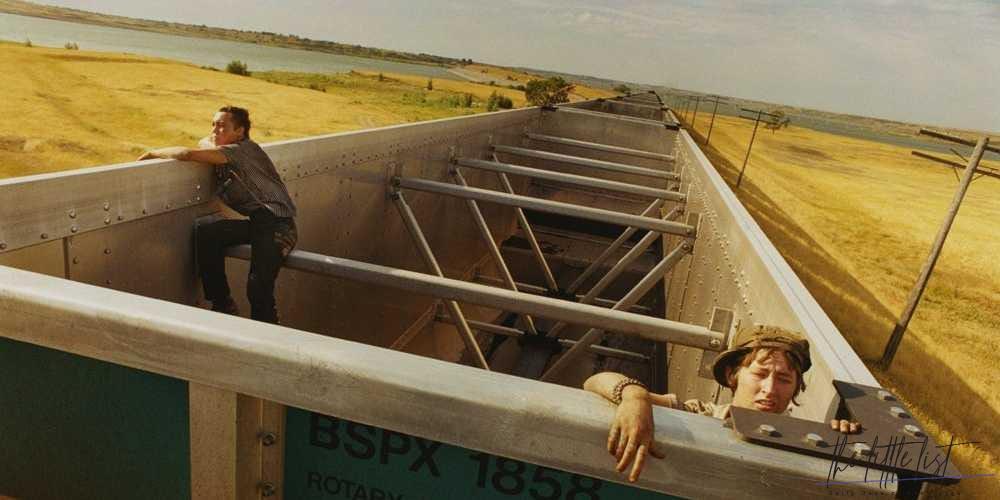Is train hopping a felony?
No, train-hopping is not a felony. However, it’s a misdemeanor in most states. It’s considered trespassing on railroad property. And can attract punishments of either a fine or spending a few days to weeks in jail.
Also, Are there any real hobos left?
“Even crew members (can’t) hop on and off moving trains.” Last weekend, Britt, Iowa, hosted the National Hobo Convention, a mainstay there since 1900. Genuine train hobos attended throughout the 20th century, but in the absence now of real hobos, the event has gone country-fair mainstream.
Is being a hobo illegal?
“I tell people the best way to enjoy traveling is always the safe way,” says Connecticut Shorty, a former hobo “queen,” as crowned at the National Hobo Convention that takes place the second week of August, every year since 1900, in Britt, Iowa. “Hopping freights is illegal and dangerous.”
How did hobo shoestring lose his fingers?
Riding on trains is a dangerous lifestyle, Nichols admits. He was hurt one time while traveling on the Kansas City Southern Railroad in Pittsburg, Kansas. He fell and had a pinky and ring finger on top of the rail. The train ran over his fingers.
Is The Hobo Code real?
It was called the Hobo Code. This brilliant, hieroglyphic-like language appeared random enough for busy people to ignore, but perfectly distinctive for hobos to translate. … It’s estimated that there were 250,000 teenage hobos zigzagging the rails in America from the late ’20s to early ’40s.
What are hobos known for?
A hobo is a migrant worker or homeless vagrant, especially one who is impoverished. The term originated in the Western—probably Northwestern—United States around 1890. Unlike a “tramp”, who works only when forced to, and a “bum”, who does not work at all, a “hobo” is a traveling worker.
Who was the most famous hobo?
1. is arguably the most famous hobo in the United States. His given name is Leon Ray Livingston and he was born in 1872 and he was a lifelong wanderer. He was riding the rails, and stowing away on ships starting at the age of 11 and then he began to write about his journeys. He wrote about a dozen books on the subject.
What’s the difference between hobo and homeless?
(North America) A wandering homeless person, especially (historical) one illegally travelling by rail or (pejorative) a penniless, unemployed bum. … A hobo is a migrant worker or homeless vagrant, especially one who is impoverished. The term originated in the Western—probably Northwestern—United States around 1890.
How did hobos survive during the Great Depression?
With no job and no home, men were forced to go to where the jobs were. Hitching rides in boxcars along the nation’s railways, these hobos, as they came to be known, carried their few possessions with them and lived a nomadic lifestyle.
Who is the hobo King?
From a Convention attendee: Britt’s “Hobo Days” celebration usually draws about 20,000 tourists over several days, and about 75 or 80 tramps.
…
Past Kings and Queens.
| Year | King | Queen |
|---|---|---|
| 2019 | Slim Tim | Flux (Magnolia) |
| 2021 | Buzzman | Sully |
What does Hobo Shoestring do for a living?
Mark Nichols prefers to go by the name “Hobo Shoestring” and he is freight train hopper. It means he rides around from place to place, stowing away on board trains. He has a modest social media following and regularly uploads videos to his YouTube channel as well as his Facebook.
Why are train tracks 4 feet 8.5 inches?
The answer given is that English ex-patriots built U.S. railroads, and 4 feet 8-1/2 inches was the standard railroad track gauge in England because the railroad tracks were built on top of road ruts created by the Romans to accommodate their war chariots. … Eventually, railroad tracks were laid on top of the road ruts.
Where is stobe the hobo buried?
James William “Jim” Stobie
| Birth | 23 Oct 1984 Denver, Denver County, Colorado, USA |
|---|---|
| Death | 8 Nov 2017 (aged 33) Baltimore County, Maryland, USA |
| Burial | Crown Hill Cemetery Wheat Ridge, Jefferson County , Colorado, USA Show Map |
| Memorial ID | 187076345 · View Source |
3 feb. 2018
How do hobos survive?
How did hobos mark houses?
Three diagonal lines — not a safe place. A square with a slanted roof (signifying a house) with an X through it — the house has already been “burned” or “tricked” by another hobo. Two shovels — work available (shovels, because most hobos performed manual labour).
What kind of people become hobos?
Hobos were the nomadic workers who roamed the United States, taking jobs wherever they could, and never spending too long in any one place. The Great Depression (1929–1939) was when numbers were likely at their highest, as it forced an estimated 4,000,000 adults to leave their homes in search of food and lodging.
What is the life of a hobo?
Life as a hobo was difficult. The travelers were poor, hungry, and faced hostility from train crews and railroad security staff known as ‘bulls. ‘ Hopping on and off moving trains was also very dangerous. It was easy to get trapped between cars, and in bad weather, it was entirely possible to freeze to death.
Is The hobo Code real?
It was called the Hobo Code. This brilliant, hieroglyphic-like language appeared random enough for busy people to ignore, but perfectly distinctive for hobos to translate. … It’s estimated that there were 250,000 teenage hobos zigzagging the rails in America from the late ’20s to early ’40s.
What is the hobo code of ethics?
Those who follow the hobo code: An ethical code was created by Tourist Union #63 during its 1889 National Hobo Convention in St. … Don’t take advantage of someone who is in a vulnerable situation, locals or other hobos. Always try to find work, even if temporary, and always seek out jobs nobody wants.
What’s the hobo stick called?
The bindle is colloquially known as the “blanket stick”, particularly within the Northeastern hobo community.
Why did hobos leave signs?
Hobos signs and symbols were a unique means of communication that helped steer hobos in the right direction—towards work and away from trouble. The life of the American hobo was an unpredictable and dangerous one. Many hobos desired to protect their community from cruelty and steer them in the direction of goodwill.
What did hobos carry?
A bindle is the bag, sack, or carrying device stereotypically used by the American sub-culture of hobos. A “bindlestiff” was another name for a hobo who carried a bindle. The bindle is colloquially known as the “blanket stick”, particularly within the Northeastern hobo community.
How did hobos travel?
Hoboes travel across the country by hopping onto trains (although other modes of transportation are also acceptable), but crucially they work for their living, performing seasonal labor and taking on odd jobs. Tramps travel, either via rail or hitchhiking, but they rarely work (and instead often beg).



